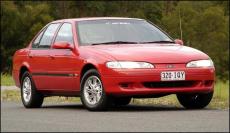Going the wrong way in the ride/handling compromise
 There are a few ways of regarding the comments I am about to write. One perspective is that they’re the ramblings of an old, out of touch man who prefers comfort to handling. Another is that I am stuck in the past, ignoring the advances that are self-evident – well, to all but apparently me.
There are a few ways of regarding the comments I am about to write. One perspective is that they’re the ramblings of an old, out of touch man who prefers comfort to handling. Another is that I am stuck in the past, ignoring the advances that are self-evident – well, to all but apparently me.
But I think that most car manufacturers are on the wrong track with their current ride/handling compromise.
Having a car that handles competently is important. No one wants to see people spear off the road when they make a minor error; no one wants to see new cars being sold that squeal and wail and wallow their way around corners. But the opposite extreme – cars that are built to handle road conditions and driving behaviour that nearly all will simply never see – is almost as silly. Why? Well, every time you’re in a car, you’re being subjected to its ride – whether that’s good, bad or awful. And while it may be possible to produce cars that both handle and ride well, in the vast majority of production cars, better handling means a worse ride.
- » Continue reading or Comments (2)

 Julian Edgar, 50, has been writing about car modification and automotive technology for nearly 25 years. He has owned cars with two, three, four, five, six and eight cylinders; single turbo, twin turbo, supercharged, diesel and hybrid electric drivelines. He lists his transport interests as turbocharging, aerodynamics, suspension design and human-powered vehicles.
Julian Edgar, 50, has been writing about car modification and automotive technology for nearly 25 years. He has owned cars with two, three, four, five, six and eight cylinders; single turbo, twin turbo, supercharged, diesel and hybrid electric drivelines. He lists his transport interests as turbocharging, aerodynamics, suspension design and human-powered vehicles.

